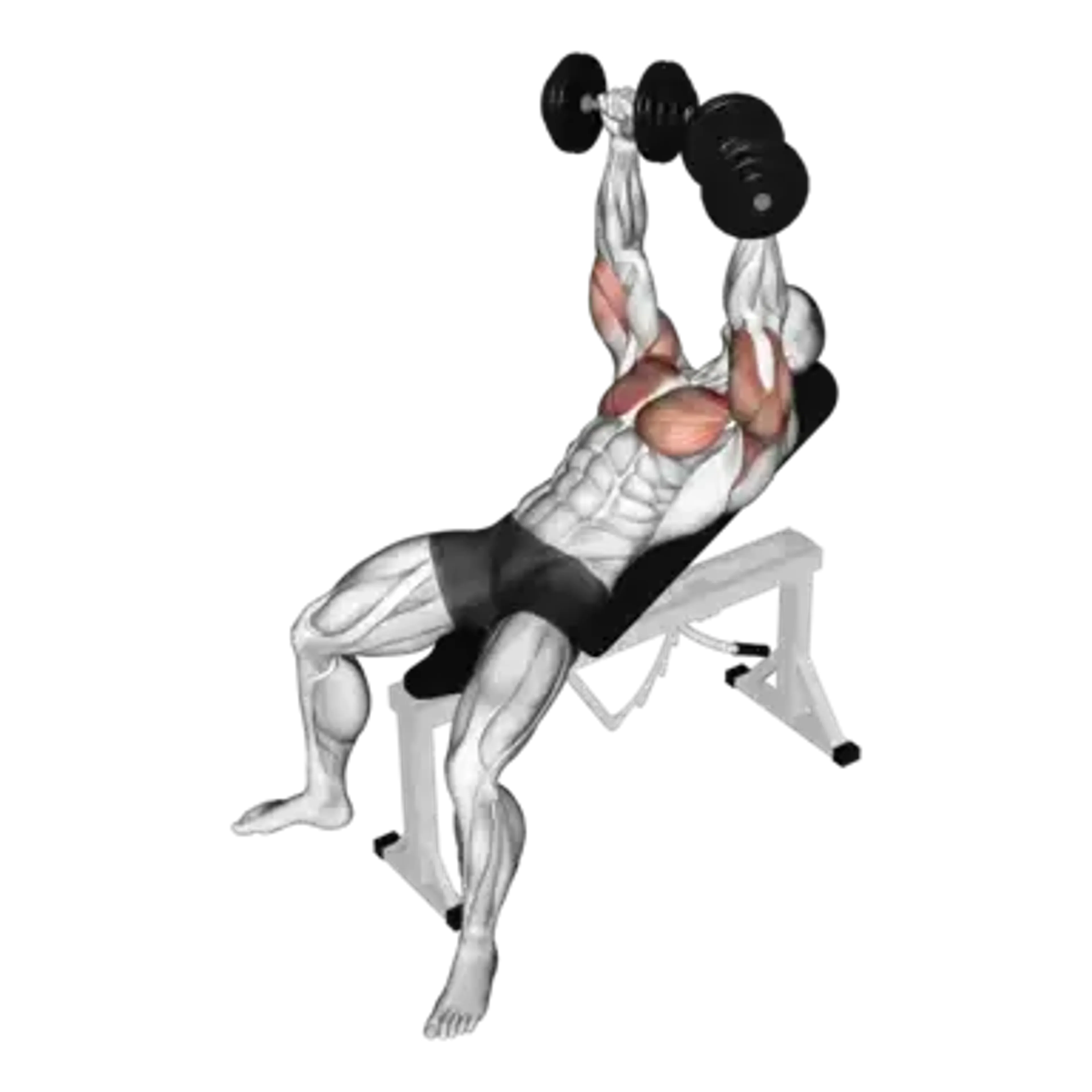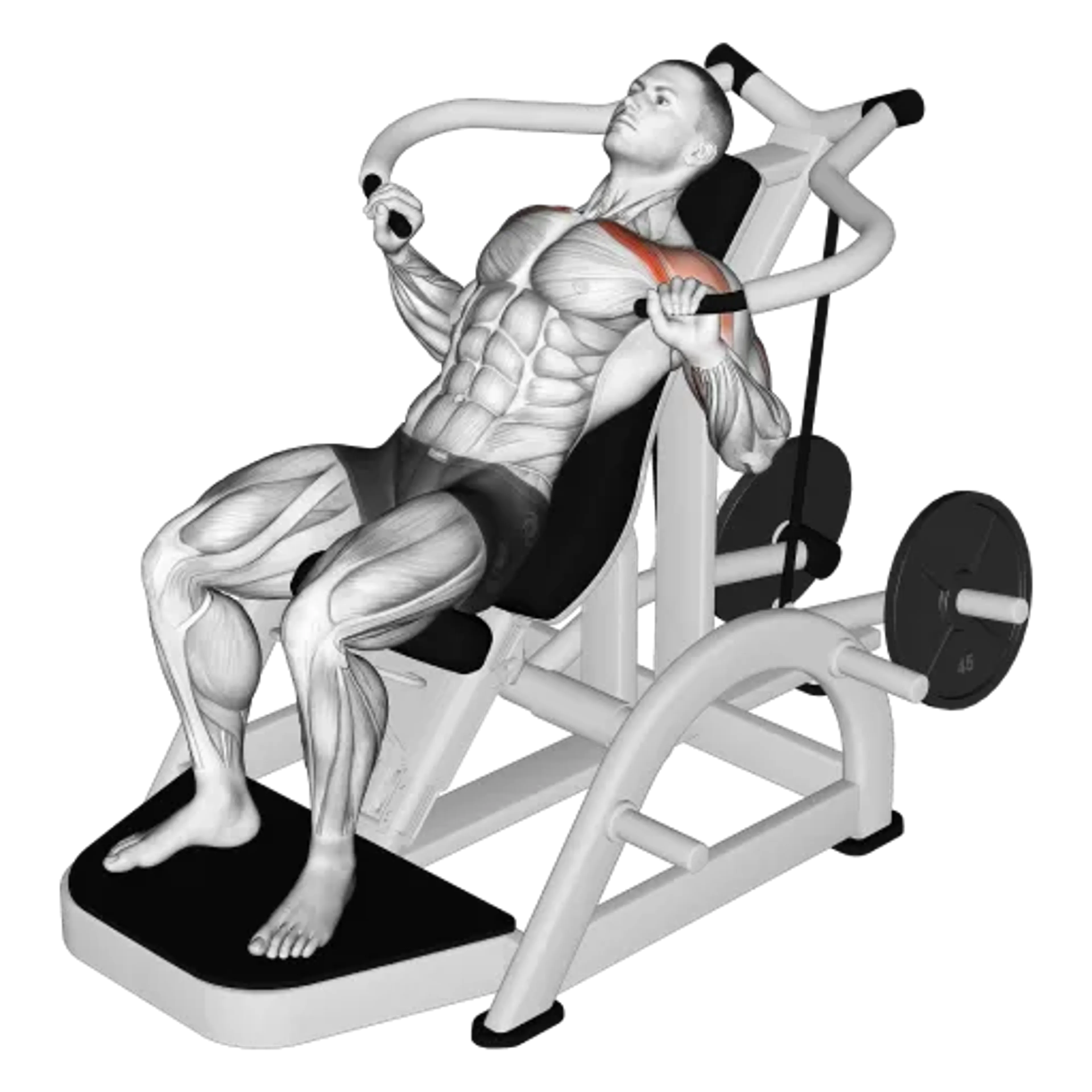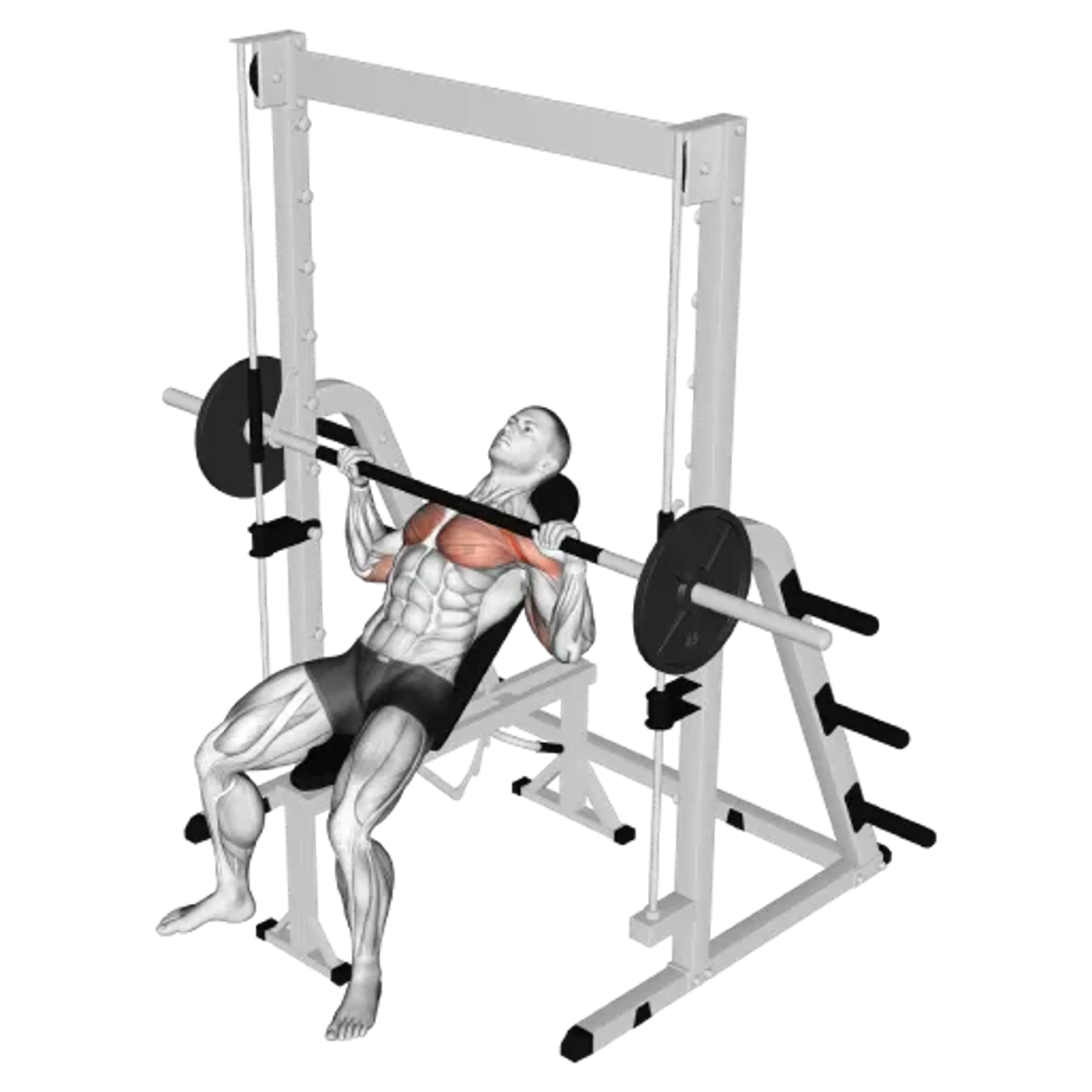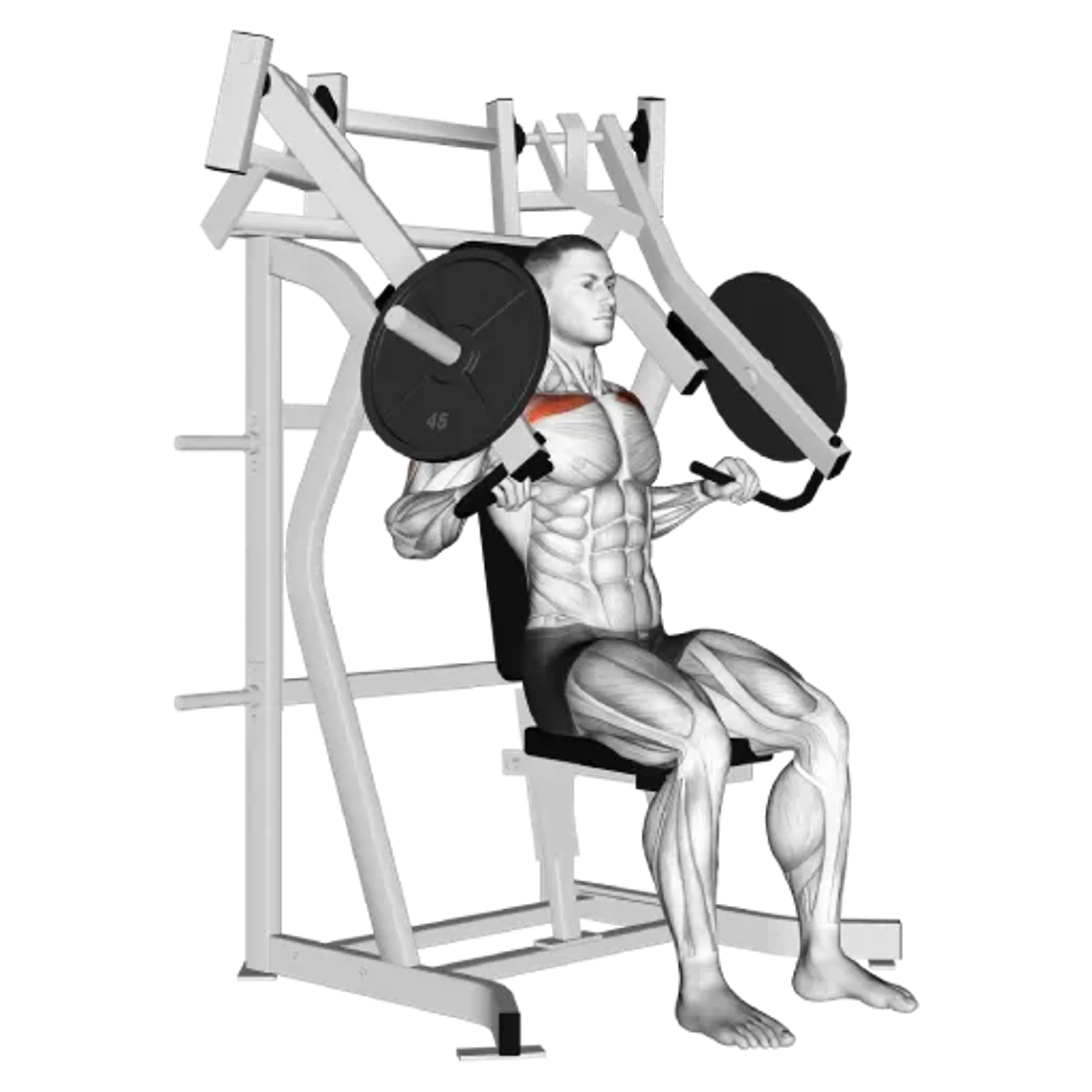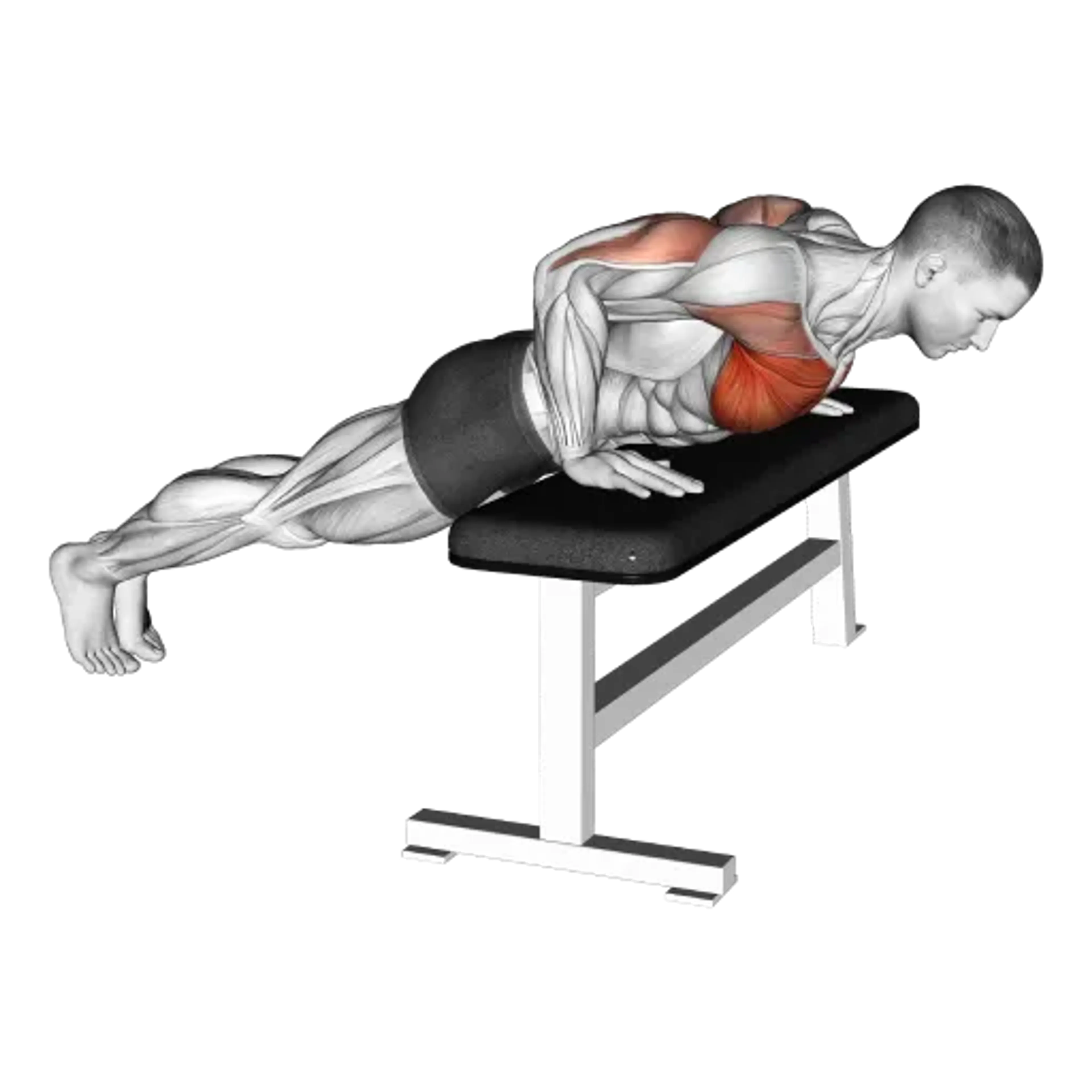Barbell Incline Bench Press (Reverse Grip)
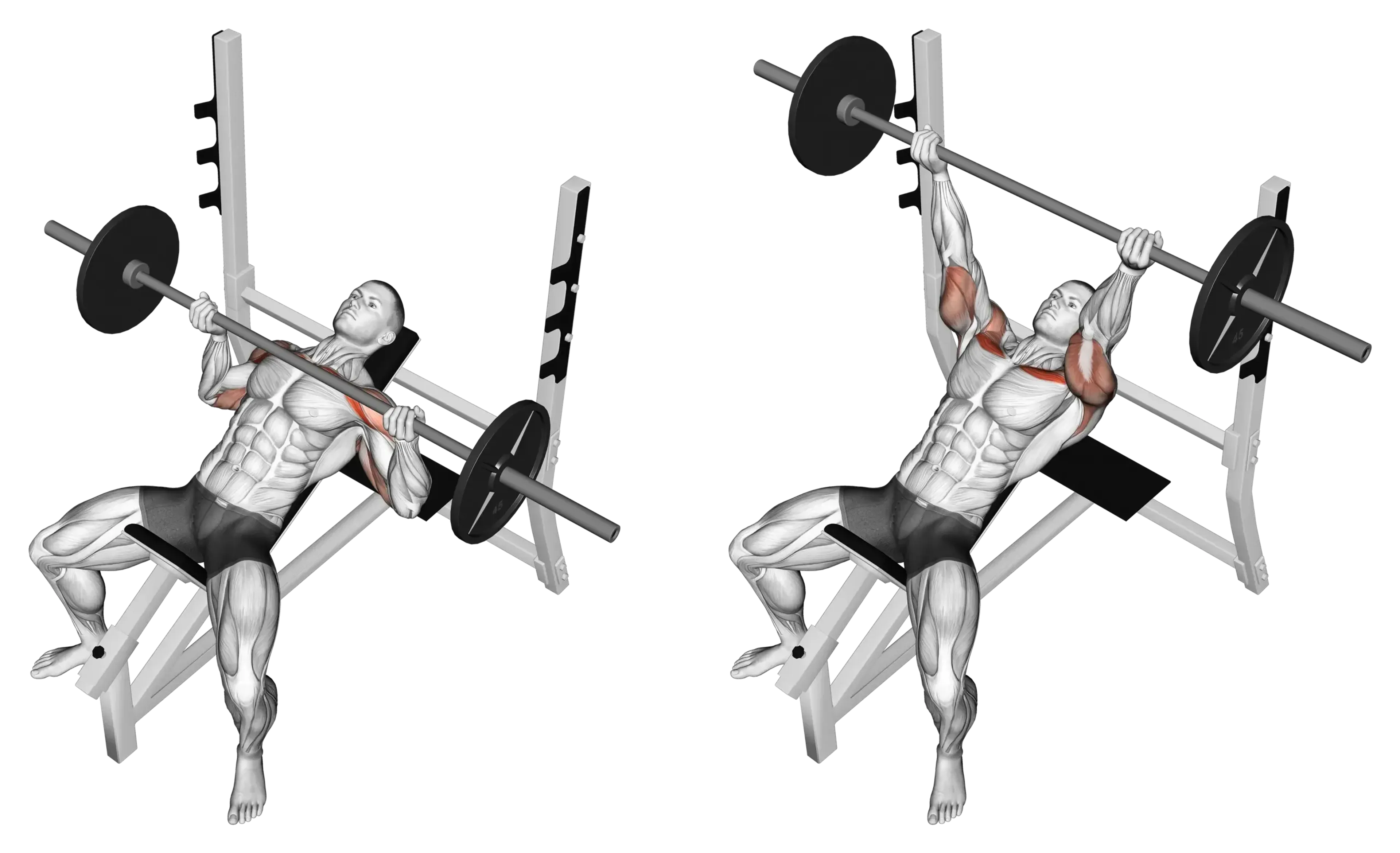
Overview
- Primary Focus:
- Chest.
- Equipment:
- Barbell and bench.
- Difficulty:
- Advanced.
General Information
Barbell Incline Bench Press (Reverse Grip) is a compound exercise that primarily targets the chest and also engages the triceps and front shoulders. It is an advanced-level movement using a supinated grip on an incline to bias the upper pecs while placing higher demands on wrist and forearm control.
Incline increases shoulder flexion and emphasizes the clavicular fibers of the pecs. The reverse grip may feel more comfortable for some shoulders but reduces grip security, so lighter to moderate loads and a spotter are advised.
Use a consistent touch point on the upper chest and keep the bar path predictable. This variation is best as a targeted accessory for hypertrophy or to rotate pressing patterns during training blocks.
Muscles Worked
- Pectoralis Major
- Primary
- Deltoid
- High
- Triceps Brachii (Lateral Head)
- Medium
- Triceps Brachii (Long Head)
- Medium
- Triceps Brachii (Medial Head)
- Medium
- Biceps Brachii
- Low
- Serratus Anterior
- Low
Instructions
- Set the bench at a moderate incline, plant your feet, and retract and depress your shoulder blades on the pad securely before unracking the bar with assistance if needed for safety and control on setup.
- Use a reverse grip slightly wider than shoulder width, wrists stacked, and thumbs wrapped securely to create a stable hold before moving the bar out of the rack position with care and precision to begin the press path.
- Lower the bar under control to the upper chest while keeping elbows close and forearms mostly vertical in the bottom position without losing shoulder position on the bench pad during the eccentric lengthening phase.
- Touch lightly or pause, then press up smoothly, guiding the bar back over the shoulders and maintaining a steady reverse grip with stable wrists throughout the concentric drive portion of the press to the top position each rep.
- Finish with elbows extended without overlocking, keep the ribcage controlled, and lower for the next rep with the same controlled path you used during the first repetition at the start of the set for consistency.
Common Mistakes
Injuries
Barbell Incline Bench Press (Reverse Grip) is a high risk exercise when performed with proper technique.
The incline plus supinated hold reduce bar security and increase the need for spotter support. Keep loads modest, maintain a wrapped grip, and avoid sudden direction changes to protect wrists and shoulders and ensure stability during the set execution phase of the press.
If you feel instability or wrist strain, switch to a neutral grip dumbbell incline or a standard pronated grip. Stop immediately when control is compromised or pain develops during motion.
Alternative Exercises
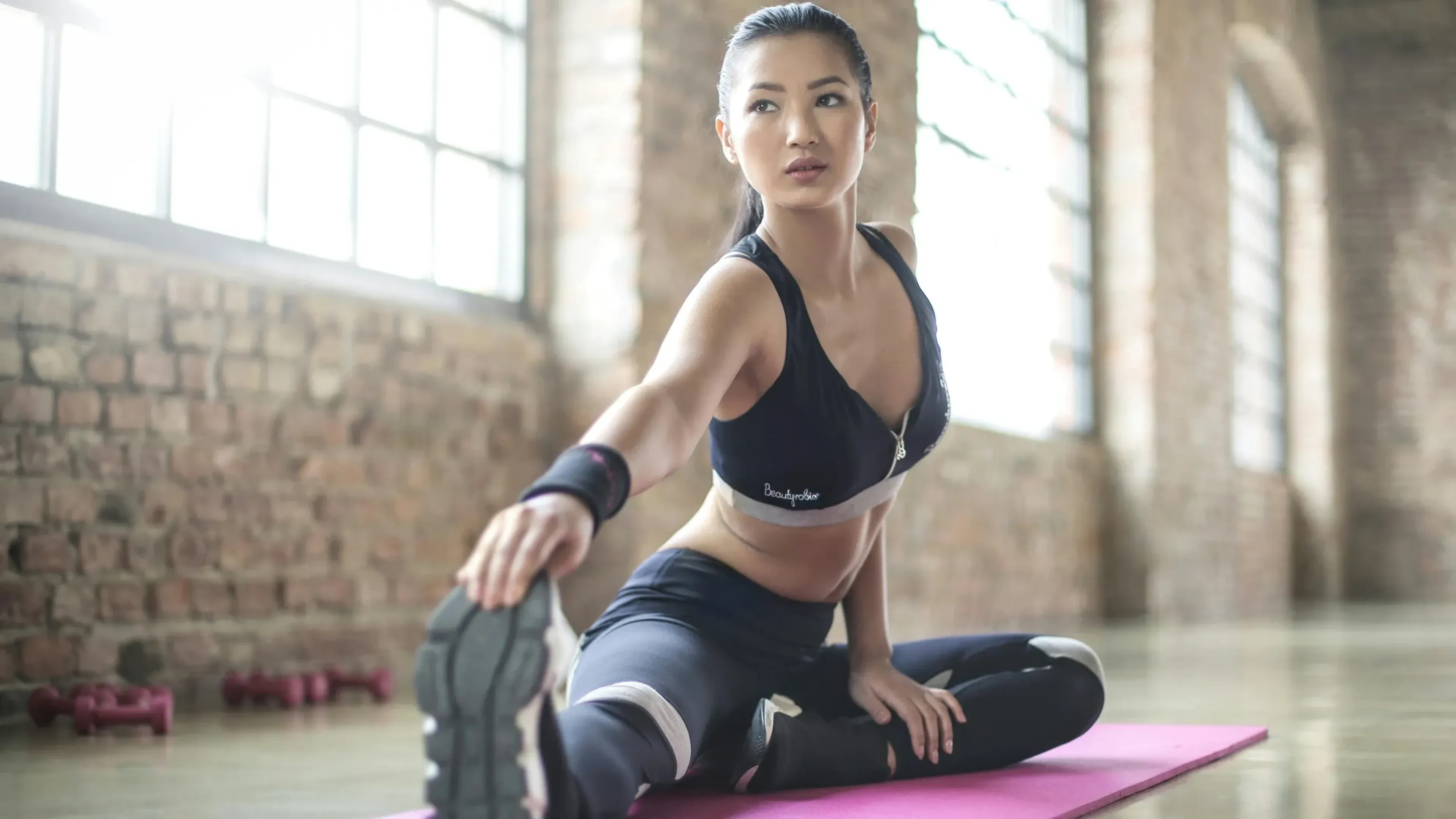
Frequently Asked Questions
- Q: What bench angle should I use?
A moderate incline around 30 degrees suits most lifters. Higher angles increase shoulder demand and may reduce pressing efficiency.
- Q: Is this better for upper chest than standard incline?
It emphasizes the same region but with a different wrist and elbow alignment. Choose the variation that feels stable and pain free while loading effectively.
- Q: Do I need a spotter?
A spotter is advised due to the grip orientation and rack height on incline. If training alone, keep loads modest and use safety devices where available.
- Q: What bar path should I follow?
Lower to the upper chest and press back toward the shoulders. Keep a smooth, repeatable path and avoid drifting toward the face.
Overview
- Primary Focus:
- Chest.
- Equipment:
- Barbell and bench.
- Difficulty:
- Advanced.
